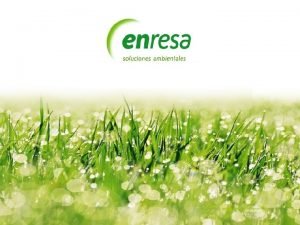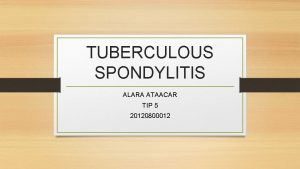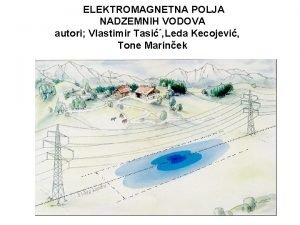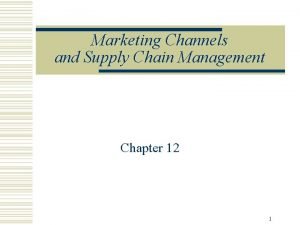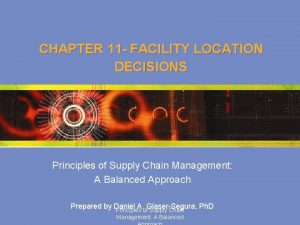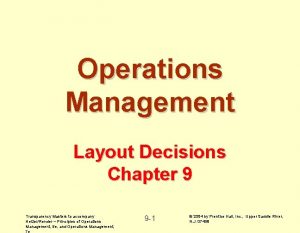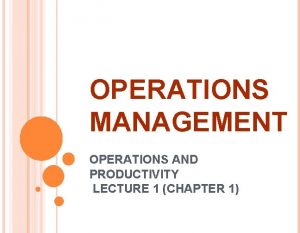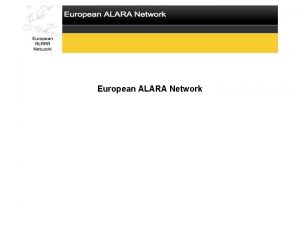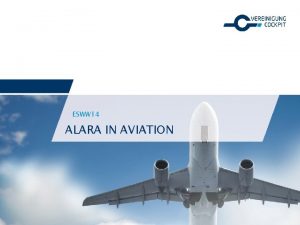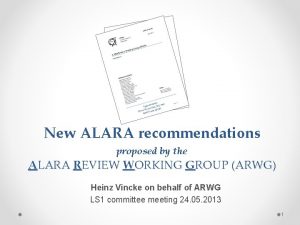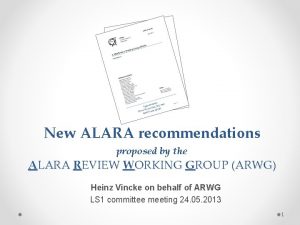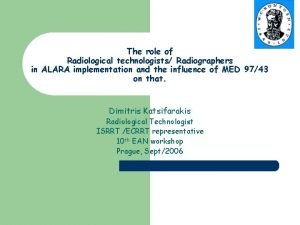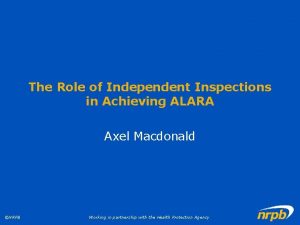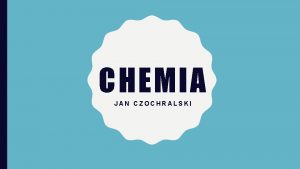The role of ALARA in management decisions Jan


























- Slides: 26

The role of ALARA in management decisions Jan Kops NV KEMA, Arnhem the Netherlands Two cases from the history of KEMA • The remediation of a dump site of radioactive waste on the KEMA premises. • The decommisioning of a nuclear test reactor (KSTR)

Background • In the fifties at KEMA a nuclear research program was started • The research was focussed on the development of a test reactor with a suspension of small (5 μm) spheres of mixed oxide (UO 2/Th. O 2) in light water. • At that time, there were no regulations nor there was an organisation for the collection of radioactive waste. It was decided to bury the waste on the KEMA premises (untill the early seventies). In 1982 the site has been remediated. • A suspension test reactor (KSTR) was built and operated. The reactor has been decommissioned in two phases: - the reactor installation: 1981 – 1991 - the remaining structures and buildings: 1999 - 2003

Site map of Business Park Arnhem

Remediation of the dump site • In the late seventies the site got nation-wide a lot of attention • The government: - no objection against the site because of radiation risks BUT - the governmental policy is to remove dump sites which do not fulfil the environmental standards of today - uncertainty about future developments on the KEMA site remediate the dump site • KEMA: O. K. , if it is assured that the waste can be removed permanently from the KEMA premises (last dumping in the deap ocean).

Remediation of the disposal site The waste: - the actually buried waste: 1344 drums of 90 litre - soil: > 0, 22 γBq/g considered as being contaminated 1400 m 3 removed 38 m 3 contaminated (cemented and dumped in 200 l drums) - trees and trunks: all checked, none contaminated

Remediation of the disposal site Radiation protection: • Basic principles: - no dispersion of radioactivity in the environment + a closed installation below atmospheric pressure (filtered ventilation) + measurements on 7 locations; no elevated levels found - doses of the workers: ALARA (or ALATA) + external exposure: no special measures (area monitoring) collective dose: 0, 35 m. Sv + internal contamination

Remediation of the disposal site Radiation protection: • Basic principles: - no dispersion of radioactivity in the environment - doses of the workers: ALARA (or ALATA) + external exposure + internal contamination: To be avoided totally protective clothing with breath protection continuous controll of airborne radioactivity total body counting; urine analysis

Remediation of disposal site Information of the public - three info magazines - an ‘open day’for the neighbours - a weekly bulletin - an info telephone line - an information stand at the waste site - an information video of the total operation

Map of the dumpholes made by a radiation protection technician during the dumping period

Drawing of the installation



Remediation of the waste site Discussion and conclusions: • Total costs 5 million Euro (price level 2003) • No dispersion of activity in the environment • Negligable radiation exposure of the workers • No problems with pressure groups nor the public during the project and later The leading factor in the decisions of the governmental as well as the KEMA management wasn’t ‘radiation protection’ but ‘publicity’ To avoid any negative publicity (at that time or later), in fact ALATA in stead of ALARA was applied

The decommissioning of the KEMA Suspension Test Reactor (KSTR

The KEMA Suspension Test Reactor • Built and operated in the period 1960 -1977; • Power: 1 MWth; • Fuel: an aqueous suspension of 5μm UO 2 / Th. O 2 spheres; • Total energy production: 150 MWh during a critical period of about two years. What initially was thought to become a simple system (“A pot, a pipe and a pump”) turned out to be a very complex system

Decommisioning of the KSTR Two phases: • First phase: Dismantling of the reactor system (1981 – 1991) A demonstration and learning project • Second phase: Demolition of the building to green meadow (1999 – 2003) The KEMA premises were transformed to ‘Business Park Arnhem’. The further development could be hindered by the residual nuclear facillities.

Conditions • First phase: reactor installation - 6 interconnected complex subsystems - narrow pipes, strongly contaminated with fision products and residual fuel -dose rates up to several m. Sv/hour • Second phase: Remaining structures and building - reactor compartments (1 to 1, 5 m thick walls of high quality concrete with 9 mm steel lining) - walls and floors were significantly contaminated - contaminated pipes embedded in the walls over long distances - low radiation levels

Reactor installation Gas purification system Dimensions 4, 3 x 7 x 4 m 3 Reactor system Dimensions 4, 3 x 8 m 3

Remaining structures

Dismantling philosophy • First Phase - Supervision by both an internal and external committee (with 5 governmental officials); - No reuse or unrestricted release of material from nuclear systems; - Target for maximum cumulative dose (200 m. Sv); • Second phase - Only a small internal advisory committee; - Strict cost benefit considerations; - Reuse or unrestricted release of as much material as possible; - No dose targets but ALARA was embedded in the working procedures.

Radiation protection • First phase - Film badge and TLD’s; - Protective clothing and breath protection; - Working area below atmospheric pressure; - Continuous survey by a radiation protection technician. • Second phase - As in the first project; - Because of the relatively low radiation levels, less severe measures were needed; - At the end, much attention was given to the release of the remaining building for conventional demolition (9 manmonths).

First phase: Dismantling of the reactor installation A variety of segmentation techniques were developed or modified for remote handling manipulator squeezers squeezed pipe

Second phase: Demolition of the building to green meadow - Only on the market available techniques were used; - Much was done manually

Results • First phase: Dismantling of the reactor installation - 100 manyear during a 13 year period; - 100 tons waste of which 80% radioactive waste; - Collective dose: 115 m. Sv, far below the target (200 m. Sv); Costs: 10 million (2003) Euros • Second phase: Demolition to green meadow - project time 4 years; - 1650 tons of material removed, 99 % for reuse - collective dose: 2, 5 m. Sv Costs: 3 million (2003) Euros

Conclusions (1) In management decisions (mostly) ALARA is not involved, because a lot of aspects have to be considered, such as: - future developments in politics and economy - public relations / publicity

Conclusions (2) Execution of projects - Strong management support (e. g. demonstration projects) - Strong public and/or political concern ALARA tends to ALATA - Strict financial constraints, force to the real application of ALARA (balancing of dose reduction and costs)
 Poster making meaning
Poster making meaning Alara facility management
Alara facility management Alara dirik
Alara dirik Alara ataacar
Alara ataacar Alara şevket demirel ortaokulu
Alara şevket demirel ortaokulu Alara princip
Alara princip Screening decisions and preference decisions
Screening decisions and preference decisions Web role in azure
Web role in azure Role taking krappmann
Role taking krappmann Statuses and their related roles determine
Statuses and their related roles determine Channel design decision
Channel design decision Facility location decisions in supply chain management
Facility location decisions in supply chain management Layout decisions operations management
Layout decisions operations management Pricing decisions and cost management
Pricing decisions and cost management Product mix decisions in management accounting
Product mix decisions in management accounting Scope of channel management
Scope of channel management Zero working capital
Zero working capital Operations management productivity problems
Operations management productivity problems Money management international
Money management international Hát kết hợp bộ gõ cơ thể
Hát kết hợp bộ gõ cơ thể Frameset trong html5
Frameset trong html5 Bổ thể
Bổ thể Tỉ lệ cơ thể trẻ em
Tỉ lệ cơ thể trẻ em Gấu đi như thế nào
Gấu đi như thế nào Glasgow thang điểm
Glasgow thang điểm Alleluia hat len nguoi oi
Alleluia hat len nguoi oi Môn thể thao bắt đầu bằng chữ đua
Môn thể thao bắt đầu bằng chữ đua

